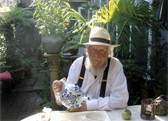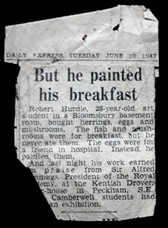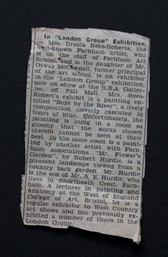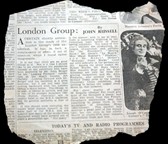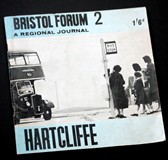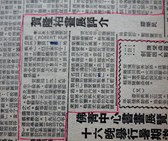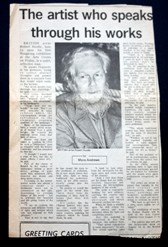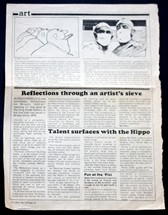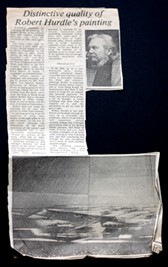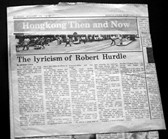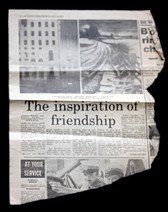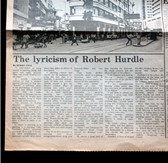The Lyricism of Robert Hurdle
By Benny Chia, South China Morning Post
'I decided to bring beauty to painting, things that grow and ripen, pictorial ideas that slowly develop over the years.'
It sounds somewhat curious to hear a modern painter expound on that line. 'Beauty' is definitely passé in the phraseology of modern art but then Robert Hurdle admits that he looks constantly to the past, not the future. And he would have been happiest living in Paris at the turn of the century.
The lyricism of Robert Hurdle's statement on painting sounds almost effete in the face of the comment of one vanguard painter such as Frank Stella, who said 'my painting is based on the fact that only what can be seen there is there. It really is an object.'
In short, a painting is a painting is a painting. Like Gertrude Stein's immortal tautology on a rose, it shows the same unwillingness to elaborate on a visual object that defies all efforts of description.
A painting cannot and should not be explained beyond the fact that it is basically a pictorial arrangement on lines and colours. Neither should it give the illusory window effect of looking into one's courtyard or some lady's boudoir.
As a result landscape painting has become un-modern, because it cannot fail to produce the illusory window effect. A landscape painting cannot escape from presenting a view.
"I feel that I have to canonise on the edges rather that spreading on to a much wider field. That's why I concentrate on a special area,' Robert Hurdle said.
As a result, he produces paintings that show the rhythmic surfaces of ripening barley fields and slack estuary waters.
One of his first attempts at painting corn shows recognisable brush-work after Francois-Millet and Van Gogh.
Clear brush strokes eventually vanish as a glazing technique takes over. A painting of a wood marks the success of that experiment.
'The even spread of pigment or very fine pointillism is done mainly by a sieve and a toothbrush. It is essentially a spraying technique without involving any mechanical means'.
In the paintings entitled Glastonbury Tor and Floating River, one sees how fine a draughtsman the painter really is. That can be attributed to his early training in that profession.
"I think always in terms of the rectangle where each side is important. And I am concerned with weight and movement, the vertical and horizontal.
"Once I was influenced by the Euston Road Group headed by William Coldstream".
He spends a great deal of time studying the contours, the visual textures and the effect of light on his subject.
'I use memory aids such as taking notes and transparencies of the places I am going to paint."
"I use transparencies because unlike prints they give you back the perspective of the subject."
"I use them to re-fresh my memory. I never copy from the photographs."
"I like painting at night in artificial light. I usually spend a long time working over one painting. It often takes months to finish. This way I know I'll see the same tones of colours every time".
This perhaps explains partly why his paintings convey a sense of static balance.
He breaks colours down into subtle and fine spectra. He uses them as effectively and deliberately as a Seurat. The results are just as astounding.
Standing in front of Robert Hurdle's Floating River, I am moved with delight and wonder.
Perhaps it is the colour, the exuberance of the brick red and the blue. Perhaps it is the cohesive spatial relations. However, there is more to it than the sum total of these visual effects, and that is: a moving, quivering, heart-warming beauty, which Robert Hurdle has made so explicit through his conviction to his canvasses.
More than that, he has somehow succeeded in bringing forth the gentle and tender affection he has for his subject, a feeling akin to love which, in my opinion, great paintings cannot do without.
His lyricism may be démodé, but it certainly has achieved tangible results.
An exhibition of paintings by RH is now on show until the 30 at the Pao Sui Loong Galleries
use slides to view full text and images, click on small pictures to see large version
